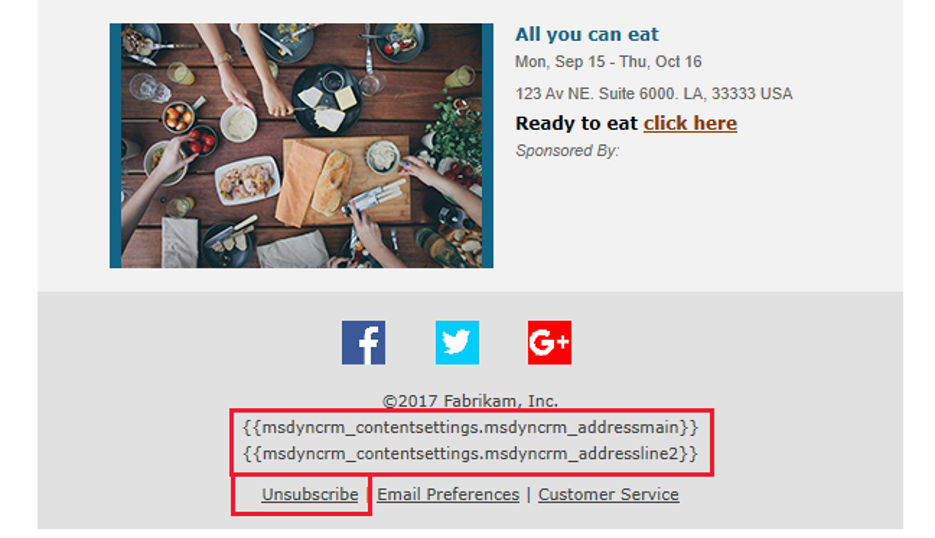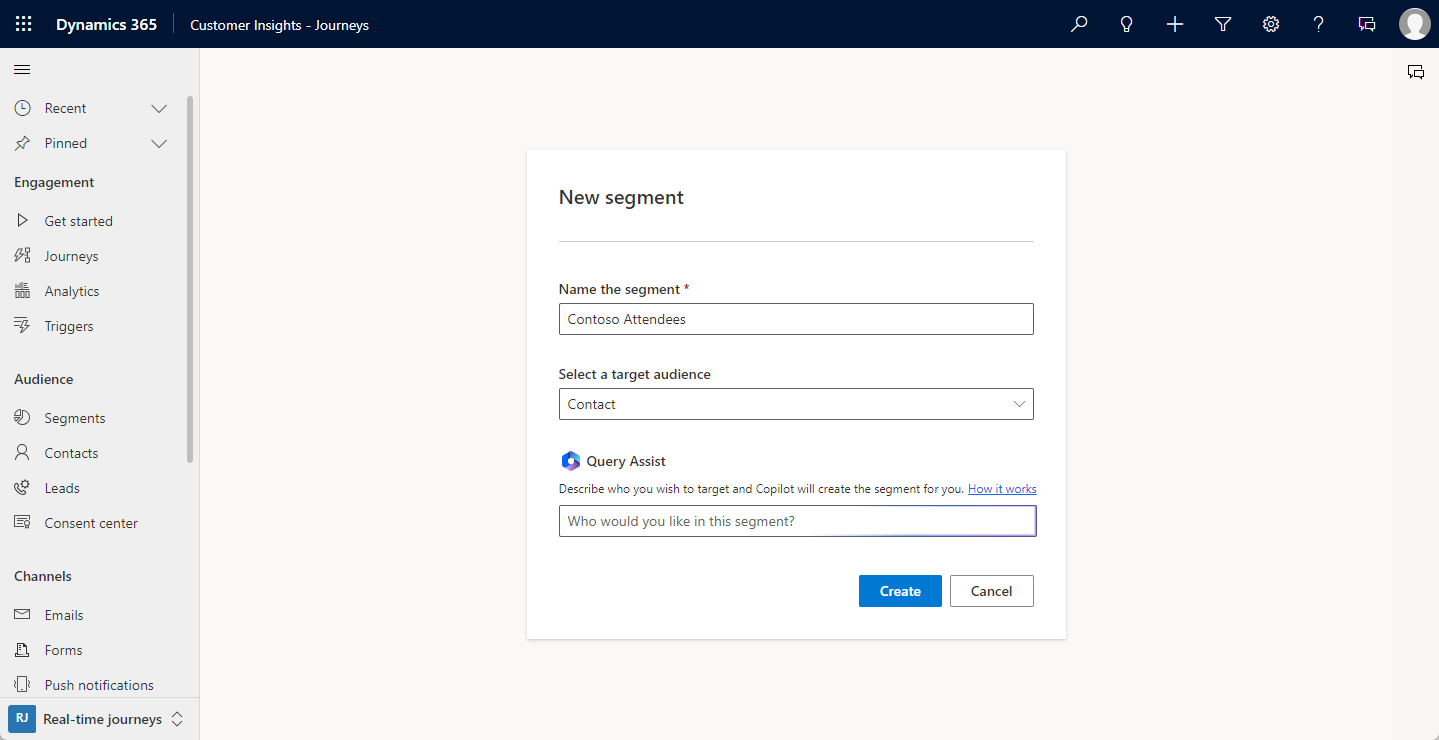Describe how to target customers by using marketing lists and segments
A typical marketing campaign is focused on your organization’s product or services. The goal is to target customers who would benefit the most from or have the greatest interest in what you are marketing. For that reason, one of the first and most important decisions to make when designing marketing pieces is choosing the correct audience. Once you understand who your audience is, you can tailor your messaging and marketing approach to best appeal to that group of people.
There are two common terms that you hear referenced in Dynamics 365 Customer Insights - Journeys when it comes to targeting customers:
Marketing segment: Establish groups of related contacts that you target your marketing initiatives to. Marketing segments are used to target customer journeys, which we discuss later. Both marketing segments and customer journeys are features that are only available with Dynamics 365 Customer Insights.
Marketing list: Allows you to target contacts, leads, or accounts. Marketing lists are much more limited in function than marketing segments. Marketing list members can be either dynamically or statically assigned.
Marketing lists are included with Dynamics 365 Sales. They provide customers that don't have Dynamics 365 Customer Insights - Journeys some basic marketing features. The quick campaign feature is also included in Dynamics 365 Sales. A quick campaign allows you to quickly generate a single activity, such as an email message to a marketing list. This capability is handy when you need to target multiple customers, but don’t need a full featured marketing campaign. While marketing lists and quick campaigns aren't the focus of this module, it's important to understand what they are as they do appear in the application and are often confused with marketing segments.
As mentioned, marketing segments establish groups of related contacts to target marketing initiatives towards. Marketing segments are created using the segmentation designer. Marketing segments focus on contact records, while the segment designer allows you search for contact across different related entities, such as contacts, leads, accounts, events snd marketing lists. For example, you could create a segment that only includes contacts from accounts that are in the manufacturing industry. You might also create a segment for contacts that participated in a specific event. The marketing insights service allows you to query segments to find contacts that engaged with your marketing initiatives or contacts that you might not be reaching due to issues such as email bounces.
When building segments, it's about accessing the customer data that you have available. Dynamics 365 Customer Insights - Journeys gives you the ability to target customer data on behavioral and profile data.
Behavioral data: Automatically generated data results from contact interactions, such as opening an email, clicking an email link, filling out a form, or signing up for an event.
Profile data: Stored data includes information from tables you frequently use, such as contacts, accounts, leads, and other synced entities.
Segments can be easily created based on different qualification factors to ensure that you're marketing services to the correct customer base.
You can segment customers based on:
Demographic: Find contacts based on their personal information typically stored on their contact record, such as finding all the contacts that are from New York.
Firmographic: Choose companies based on their business details, and then identify related contacts who hold specific roles within those companies. For instance, you can focus on the primary contact for each account with a budget exceeding one million dollars.
Behavioral: Identify contacts who engaged with your marketing activities in a specific manner and within a defined timeframe. For instance, focus on contacts who clicked the landing page link in a recent product launch email.
Static: Lets you manually define who to include in a segment by selecting which contacts should be included.
Combined Audiences: Combine existing segments to more precisely determine which customers to include or exclude. For example, you can focus on contacts in the New York segment who aren't part of the Newsletter segment.

Segments can be created in outbound marketing, real-time marketing, and Customer Insights - Data. Real-time marketing segments can return tables, such as contacts or leads. But you can also build more complex queries that reference tables such as Event Registration or Account to further enrich your segment definition. For example, leads whose parent accounts are in the Customer Service industry.

To simplify creating segments in real-time marketing, you can use the Query Assist Copilot to describe the segment definition in simple English. For example, you could tell Query Assist that you want to create a segment for people who attended a recent event. The Query Assist Copilot lets you add the results query onto the segment builder at any level of the query logic. You can add the results query either as a new group or as another condition in your existing logic.

Click-through demo: Create customer segments
In this click-through demonstration, you're guided through the process of creating a marketing segment using Query Assist Copilot. Segments can be used with other features such as email marketing.
Create customer segments with Copilot
As you saw, Dynamics 365 Customer Insights - Journeys makes it simple for marketers to easily create marketing segments to help better target and drive marketing efforts. Segments can then be applied by many of the different marketing capabilities available.